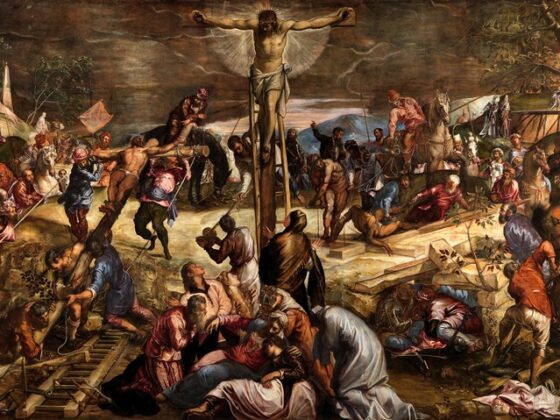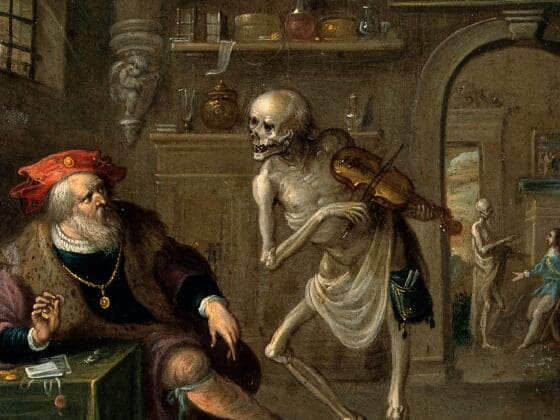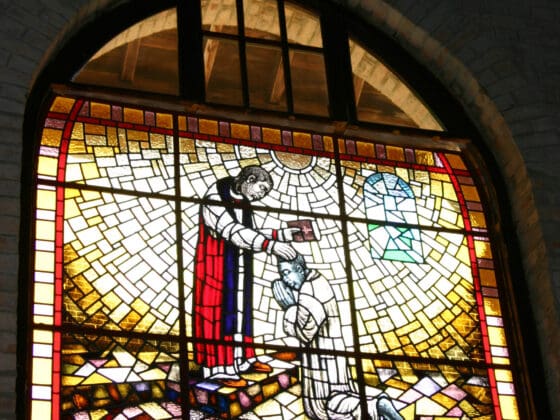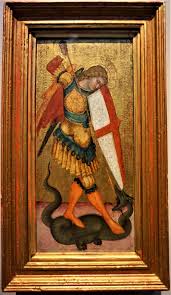Sermon Preached at Redeemer Anglican Church, Bellevue
July 11, 2021
Seventh Sunday after Pentecost
Lessons: Isaiah 7:14; 9:6-7; Romans 5:12-17; Luke 24: 14-20
In my sermon two weeks ago, I mentioned that the Apostles’ Creed begins by directing our eyes toward heaven and eternity, speaking of God the Father and God the Son. But when it speaks of “Jesus Christ our Lord,” it moves directly to a brief narrative of his earthly life in the first thirty years of the first century: “conceived by the Holy Spirit and born of the Virgin Mary, suffered under Pontius Pilate, died and was buried.”
So let’s consider the Virgin Birth. I chose for our text the Old Testament prophecy from Isaiah chapter 7. Here is the context of this prophecy. In the year 732 BC the mighty Assyrian chariots were bearing down on the petty of the Ancient Near East. Sensing their impending doom, the kings of Syria and Israel (the ten northern tribes) tried to force King Ahaz of Judah into a defensive alliance. The plan backfired: in desperation Ahaz appealed to the Assyrians for help. This short-term move by Ahaz would bring long-term consequences, as David’s kingdom ultimately became a vassal state of the Near Eastern empires and then was destroyed in 587 BC.
But the greater problem, according to Isaiah, was not political but spiritual. Ahaz’s deal-making revealed his lack of faith in Yahweh, the nation’s God and protector. So Isaiah warns: “If you do not stand firm in your faith, you will not stand at all” (verse 9). The prophet then promises the King “a sign as deep as Sheol (the realm of the dead), or as high as heaven” to assure him to stand fast, but Ahaz, with fake modesty protests: “I will not ask, and I will not put the LORD to the test.” All right, God says, I’ll give you the sign myself: “Behold, the virgin shall conceive and bear a son, and they shall call his name Immanuel [God with us]” (verse 14).
Like many prophecies, this one had a short-term fulfillment: Ahaz did father a son Hezekiah, who trusted God, and Judah survived for nearly a century after Syria and Israel were wiped off the map. But there was a much higher and deeper fulfilment of this promise, pointing to the messianic King, as announced by the prophet in this familiar text:
For to us a child is born, to us a son is given; and the government shall be upon his shoulder, and his name shall be called Wonderful Counselor, Mighty God, Everlasting Father, Prince of Peace. Of the increase of his government and of peace there will be no end, on the throne of David and over his kingdom, to establish it and to uphold it with justice and with righteousness from this time forth and forevermore. The zeal of the LORD of hosts will do this. (Isa 9:6-7)
It was this promise which was fulfilled seven centuries later when the angel Gabriel announced to the Virgin Mary that she would conceive and bear a son named Jesus. Let me draw several connections with the original prophecy. First, the Virgin Birth was initiated by God: “The zeal of the Lord of Hosts will do this.” Secondly, the Virgin Birth, or more precisely the virginal conception of Jesus, was a miracle contrary to the laws of nature. Women do not get pregnant without a man naturally, whatever tricks the magicians in our genetic labs are up to nowadays. Mary’s husband-to-be knew this and needed a dream from on high to prevent him for putting her away.
Finally, the prophecy signified that Jesus Christ was True Man and True God from the moment of his conception. The name Immanuel, God with us, meant something far deeper than God’s intervention in the natural process of conception, as was the case with Sarah and Hannah. While it is beyond any science to determine how God begot Jesus, it is nevertheless true that it was God Himself, God the Holy Spirit, who “overshadowed” Mary. For this reason, the early church revered Mary as Theotokos, “the God-bearer.”
But the Creed also says the Son of God was “made Man,” and hence it is equally true that the Mother of God was also the “Man-bearer.” As I mentioned last time, Jesus referred to himself as “Son of man,” which means “mortal man,” born of woman and subject to the inexorable downward drag of death. Isaiah’s prophecy is further fulfilled when Jesus’ body was buried and He descended in spirit to the realm of the dead (1 Pet 3:18).
The messianic line from David was a line of mortals, and Jesus Christ, the Man Born to be King, was in that lineage. But Jesus’ genealogy, according to Luke, stretches all the way through David to Adam (Luke 3:38). Our Epistle reading lands us right back in Eden. St. Paul says:
Therefore, just as sin came into the world through one man, and death through sin, and so death spread to all men because all sinned – for sin indeed was in the world before the law was given, but sin is not counted where there is no law. Yet death reigned from Adam to Moses, even over those whose sinning was not like the transgression of Adam, who was a type of the one who was to come. (Rom 5:12-14)
Paul’s portrait of Adam is pretty grim. It’s not the lordly Adam walking naked in Paradise; it’s Adam, clothed in shame, fallen into the bondage of sin and death, cursed and cast out of Eden. That Adam, Paul says, is the prophetic figure of the true Son of Man. Adam foreshadows the broken and humiliated corpse of the Man hanging on the Cross.
In linking Adam to the Cross, the New Testament writers were not demeaning Christ or God’s good creation of mankind in His image. Just the opposite: Jesus is the true Man, “one who in every respect has been tempted as we are, yet without sin” (Heb 4:15). The early church father Irenaeus developed a view that Christ “recapitulated,” i.e., passed through, every stage of human life in order to redeem every crumb of our humanity. A contemporary writer describes the Gospel story as “Jesus becoming Jesus.” I might be so bold as to suggest that it was necessary for Jesus to reach the age of mature adulthood in order to bring us to full maturity “in Christ” (Eph 4:13; cf. John 7:6).
There is a final dimension to the Immanuel prophecy. Jesus is God with us, as we shall be. In another passage, St. Paul says,
Thus it is written, “The first man Adam became a living being”; the last Adam became a life-giving spirit. But it is not the spiritual that is first but the natural, and then the spiritual. The first man was from the earth, a man of dust; the second man is from heaven. As was the man of dust, so also are those who are of the dust, and as is the man of heaven, so also are those who are of heaven. Just as we have borne the image of the man of dust, we shall also bear the image of the man of heaven. (1 Cor 15:45-49)
True humanity cannot be understood only from below. Jesus cannot be understood only as a creature of dust, “from the earth, earthy,” as the King James Version has it. The first Adam, even before the Fall, was incomplete, needing a partner; and even partnered, Adam and Eve were incomplete, grasping at knowledge to live a good life. The second Adam fulfilled the divine image by being a man of the Spirit, conceived by the Spirit, baptized in the Spirit, His words being Spirit and Truth, and finally giving back His Spirit on the Cross. And He has promised His Spirit to those who believe in Him and are born again. Justification by faith in Jesus, which is once for all, is accompanied by sanctification, which takes time, walking in the footsteps of Jesus. By grace we have been made partakers of the divine nature, being conformed to the image of His Son (2 Pet 1:4; Rom 8:29).
So the Creed teaches us that Jesus Christ is Immanuel, God with us. It also teaches us that He is Man for us, and the Man for others, including our unexpected neighbors who are ready and waiting to hear the Gospel. The Nicene Creed, which supplements the Apostles’ Creed, begins the section on Jesus saying “for us men and our salvation he came down from heaven… and became Man.”
The Creed, I repeat, is all about love, God’s love for us through Christ: “For God so loved the world, that he gave his only Son, that whoever believes in him should not perish but have eternal life” (John 3:16). The love shared among the Divine Persons – Father, the Son, and the Spirit – is all-sufficient, and out of the overflowing abundance of that love, God reached down in Jesus Christ and lived and died for us. Last week I referred to the hymn which begins:
O love, how deep, how broad, how high,
how passing thought and fantasy,
that God, the Son of God, should take
our mortal form for mortals’ sake!
The hymn continues through the mighty acts of Jesus’ life for us:
For us baptized, for us he bore
his holy fast and hungered sore,
for us temptation sharp he knew;
for us the tempter overthrew.
For us he prayed; for us he taught;
for us his daily works he wrought;
by words and signs and actions thus
still seeking not himself, but us.
Before I conclude, I want to mention one other way Jesus Christ continues to be present with us and for us – and that is in the Holy Communion. As Anglicans see it, He is present with us bodily in the Communion. Our view is a middle way between two misunderstandings. We do not believe that Christ’s presence in the elements of bread and wine can be localized and concretized; that view, called transubstantiation, rationalizes the divine mystery of our union with Christ. On the other hand, His presence is not merely symbolic, a kind of mnemonic device; Anglicans reject that view, called memorialism, which is also rationalistic and shortchanges Jesus’ words of institution when he said: “This is my Body and my Blood.” Anglicans, along with many Lutheran and Reformed Christians, believe in the real and spiritual Presence of Christ in the sacrament. The Risen Christ is seated bodily at the right of God, yet by His Spirit and through faith we participate in His Body and Blood (1 Cor 10:16).
In the Eucharist, Christ is not only present with us, He is present for us, and our proper response to this presence is thanksgiving. That is what the word “Eucharist” means: thanksgiving. That is the spirit of our Eucharistic prayer:
We earnestly desire your fatherly goodness mercifully to accept this, our sacrifice of praise and thanksgiving… Take and eat this in remembrance that Christ died for you, and feed on him in your heart by faith, with thanksgiving…. Drink this in remembrance that Christ’s blood was shed for you, and be thankful.
To sum up, the Creeds teach that Jesus Christ is the promised Immanuel – God with us – conceived by the Holy Spirit and born of the Virgin Mary. He is also the true Man given for us on the Cross and present in the sacrament of His Body and Blood. In light of this, let us now in the words of the Prayer Book “draw near with faith and take this Sacrament to our comfort.”





